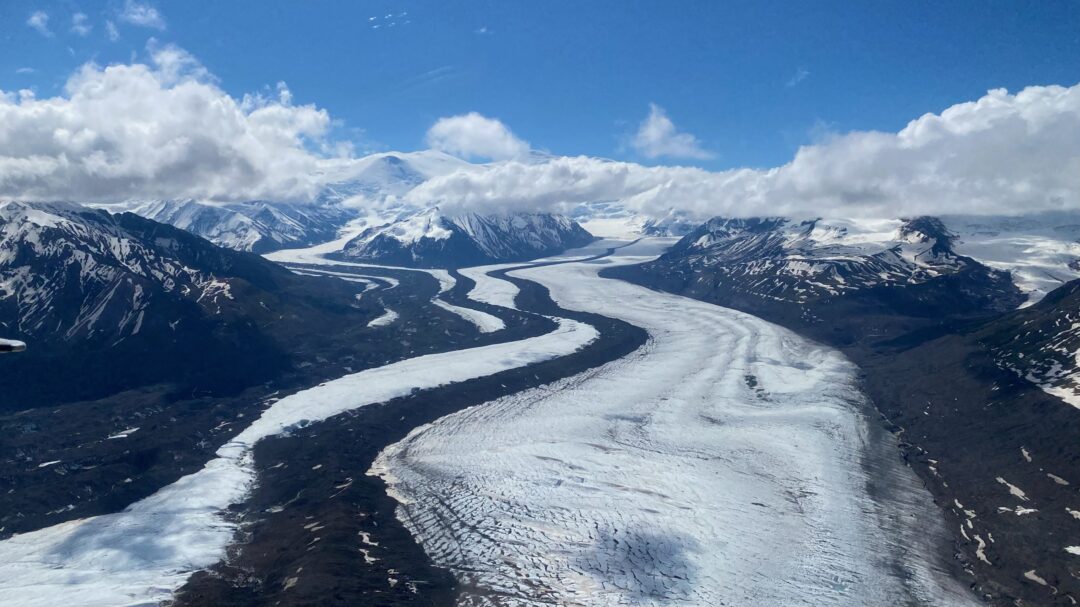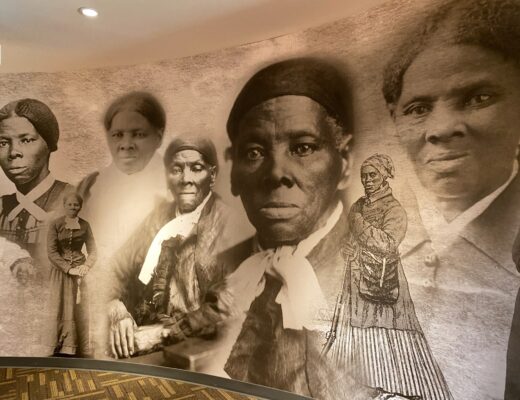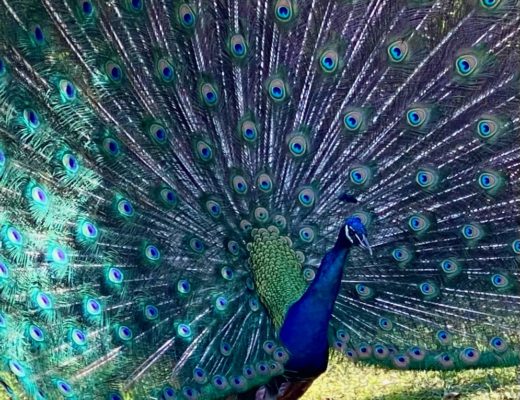At 13.2 million acres, Wrangell-St. Elias National Park is by far the largest US national park, but due to its remote location it sees less than 80,000 visitors annually, making it one of the least visited national parks. As its difficult to comprehend the vast nature of this relatively untouched wilderness, we’ll rely on some fascinating statistics to try and describe it.
Acreage and Peaks
- This park is larger than Denmark, larger than Costa Rica, and larger than Vermont and New Hampshire
- 6 Yellowstone parks could fit inside its area!
- Interesting side note: the next 3 largest US national parks are also in Alaska.
- Wrangell-St. Elias National Park is larger than Switzerland and its mountains are higher.
- It contains the largest coastal mountain range in the world.
- In fact, 10 of North America’s 15 highest peaks are found in the Wrangell-St. Elias mountain ranges and adjoining Kluane National Park in Canada.
- The height of some of the most easily identified peaks are as follows: Mt. Drum is 12,010 feet tall; Mt. Wrangell comes in at 14,163, Mt. Blackburn is 16,140 feet tall, Mt. Sanford is 16,237, and Mt. St. Elias comes in at a towering 18,008 feet, the second tallest peak in the United States.
- Interesting side note, Dora Keen was the first person to summit the 16,140-foot-tall Mt. Blackburn in 1912. She did it in a dress and her route was never repeated.
- The Wrangell Mountains are volcanic in nature and as such this range contains the largest active volcano on the US mainland. (Hawaii must have larger ones.)
- The St. Elias Range, however, are being pushed up tectonically and are thus, are still growing by 3-4mm per year, making it one of the fastest growing mountain ranges.
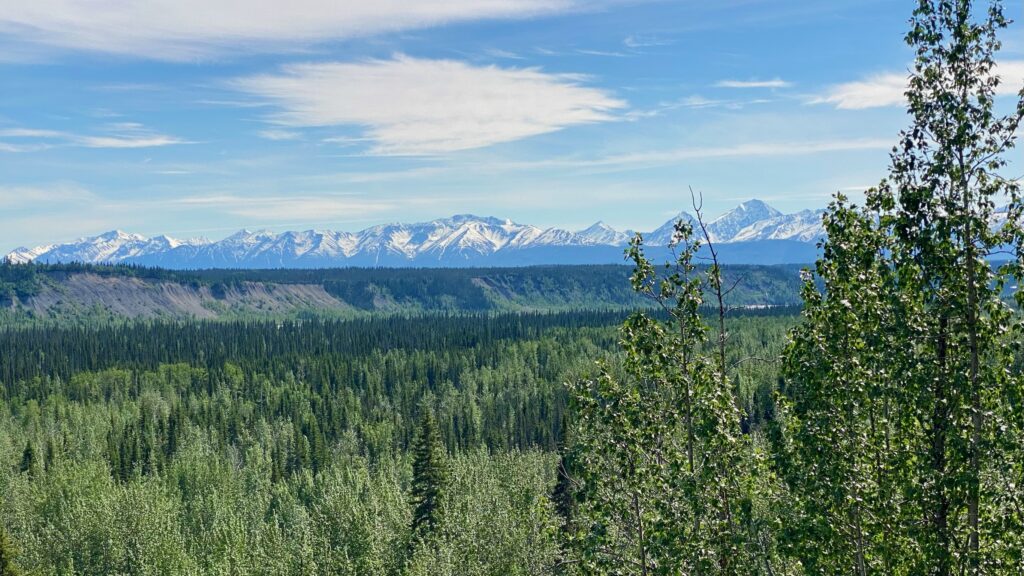
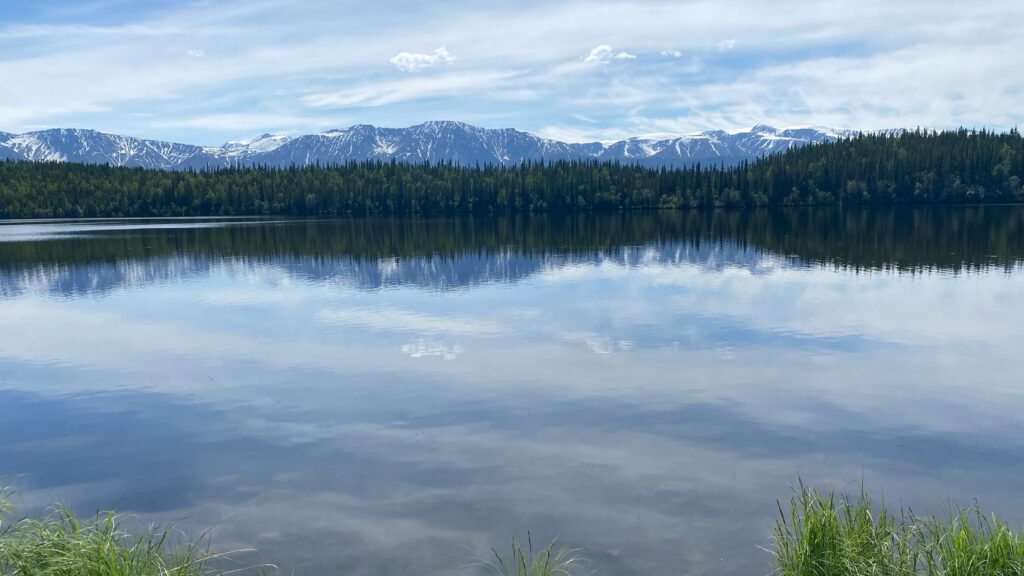
Glaciers
- Within the park’s boundaries is the nation’s largest glacier system. We could see the beautiful Kennicott Glacier from our campsite .
- Glaciers cover about 25% (or about 5,000 sq. miles) of the park.
- These glaciers make up 60% of the glacier ice in all of Alaska.
- This park contains the world’s largest interior valley glacier (Nabesna Glacier), which is over 75 miles long.
- The Bagley Icefield in Wrangell-St. Elias is approximately 127 miles long, up to 6 miles wide and estimated to be about 1000 feet thick, which is taller than the height of the Eiffel Tower.
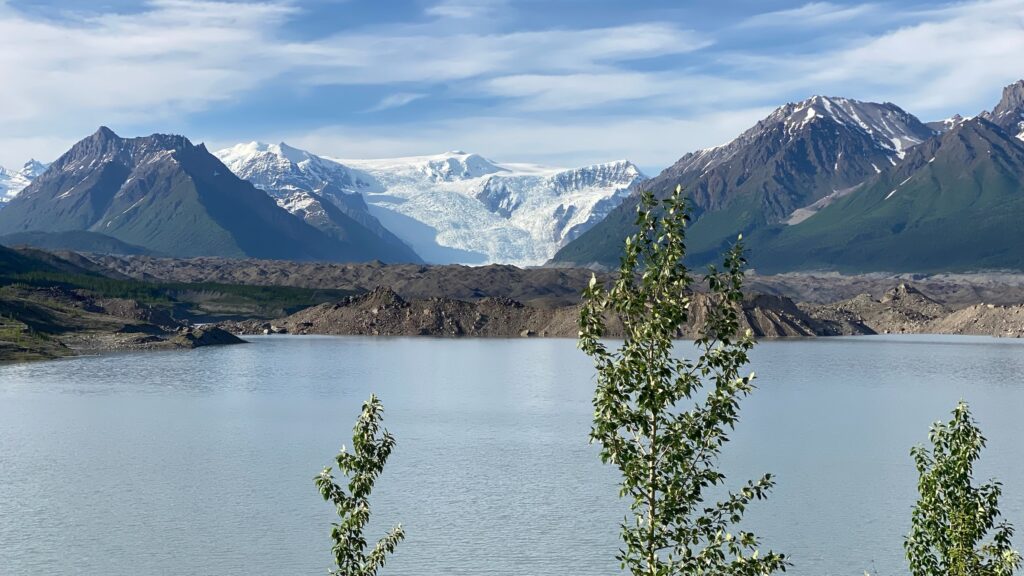
Visitation And Access
- As noted above, annually, the park has fewer than 80,000, making it one of the least visited national parks.
- Compare that to the Great Smoky Mountains which is top of the list and sees over 13 million visitors annually, Grand Canyon and Yellowstone each see about 4.5 million annually and Utah’s Bryce Canyon sees about 2.5 million. In fact, Alaska is home to 5 of the 15 least visited national parks. They’re simply hard to get to!
- It’s not just that few tourists make the journey, the population in Alaska is limited as well. As of 2020, they reported a population of 733,391 with only Vermont and Wyoming having less, but their land mass is just over 18% of the US. In the Copper River Basin, an area in and around the Wrangell-St. Elias National Park, the population just hasn’t grown that much in the last 200 years. In the 1790s (first contact) the population was about 1,200 and during the mining boom in the 1920s (while there were surges to construct the railroad) the average population was about 2,850. As of 2000 it was about 3,500.
- Like Denali, auto access into this wilderness park is limited. It wasn’t until the 1970s when a new bridge over the Copper River was constructed that the old rail bed of the former Copper River and Northwestern Railway (CRNW) was covered in gravel to create the 59-mile gravel road (called McCarthy Road now). The gravel road stretches from Chitina, Alaska on the western edge of the park to the small town of McCarthy near the park’s center. See more info on our travels of this road in the post linked here.
- There’s a second gravel road that extends 42 miles from Slana to Nabesna on the north edge of the park. It’s first 16 miles are paved / chip sealed but the remainder is dirt and gravel. So about 100 miles total of road is available in the vast 13 million-acre park.
- Similar to Denali, there are few defined trails and a lot of hiking is simply bushwhacking through the area.
Towns Within the Park
- McCarthy and Kennecott are two towns that lie at the end of McCarthy dirt road in the middle of the park. Why? Copper was discovered here in the early 1900s and not just some – enough that the Kennecott mine owners created these towns, the railroad and the shipping lines to get the copper to market in the state of Washington.
- Copper River and Northwestern (CRNW) railroad lines nicknamed “Can’t’ Run Never Will” was built in 1908-1911 against nearly impossible odds with subzero temps, massive cliffs, raging rivers, and impenetrable snow. At the height of construction about 6,000 men were working to blast tunnels, haul rocks, build bridges and lay tracks to complete the railway in just 5 years. During the operational years from 1911 to 1938, two trestle bridges – one along the Copper River and one along the Kennicott River** were typically destroyed by nature and rebuilt by men each year. Ultimately 196 miles of track was laid through forests and avalanche zones and 15% of what was laid was over bridges and trestles. Ultimately, there were 129 bridges over canyons, rivers and even on the Allen Glacier. The completed railway cost was 23 million dollars, equivalent to about 460 million today.
**Kennecott mine and mill is spelled with an “e” and natural features named after Kennecott are spelled Kennicott with an “i”. Some sort of clerical error that from years ago.
- To create the railroad, build the towns, pay the workers, etc they estimate that 100 million dollars were spent, but the copper mines in Kennecott ultimately realized profits of 100 million dollars, doubling their investment. That would be a profit of over ~2 billion in today’s currency.
- Kennecott mill town is the best-preserved example of early 20th century copper mining techniques in the country.
- It’s 104-year old, 14-story structure mill stair-steps up a 36-degree slope and can be toured with a guide, hard hats included.
- McCarthy is a little town with a lot of charm. Some visitors go just to see local residents who starred on the Discovery Channel reality TV series “Edge of Alaska”.
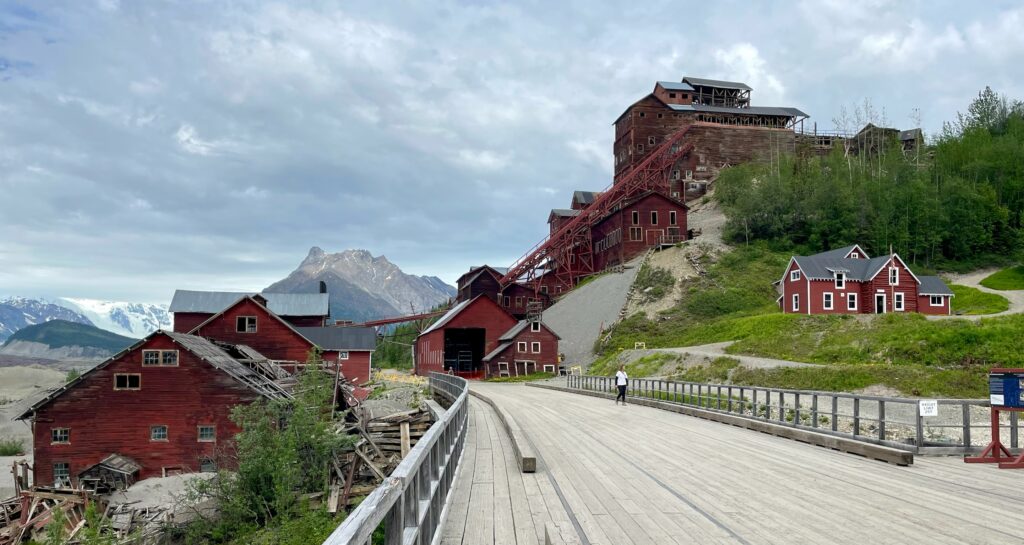
With all this information, what are some of the best things we found to do during our visit?
Things To Do
Stay
At the end of McCarthy Road, you can camp or RV for a fee with a great view of Kennicott Glacier.
A note about boondocking: This park didn’t become a park until 1980 and despite having low population, there are over 1 million acres within it that are privately owned so you have to be incredibly careful that you don’t pull off and camp on private property. In fact, just driving McCarthy Road there were numerous signs that would indicate being in the park, then on private land, and then suddenly back in the park.
There’s a pedestrian bridge from the end of the road parking area to McCarthy and only locals are allowed to have cars in McCarthy and Kennecott so to get to the town of McCarthy you can walk about ½ mile into town, ride a bike, ride a motorcycle, take an ATV, or catch a free van into McCarthy.
From McCarthy, it’s ~4.5 miles up the hill to Kennecott and you can get there by the same means, except that the van to Kennecott will cost you a minimum of $5 each way.
If you’re going to camp or RV, there are hotels available in both McCarthy and in Kennecott. I believe they offer driving services to and from their hotels once you pay to park your car at the end of the road and walk your luggage and self across the bridge.
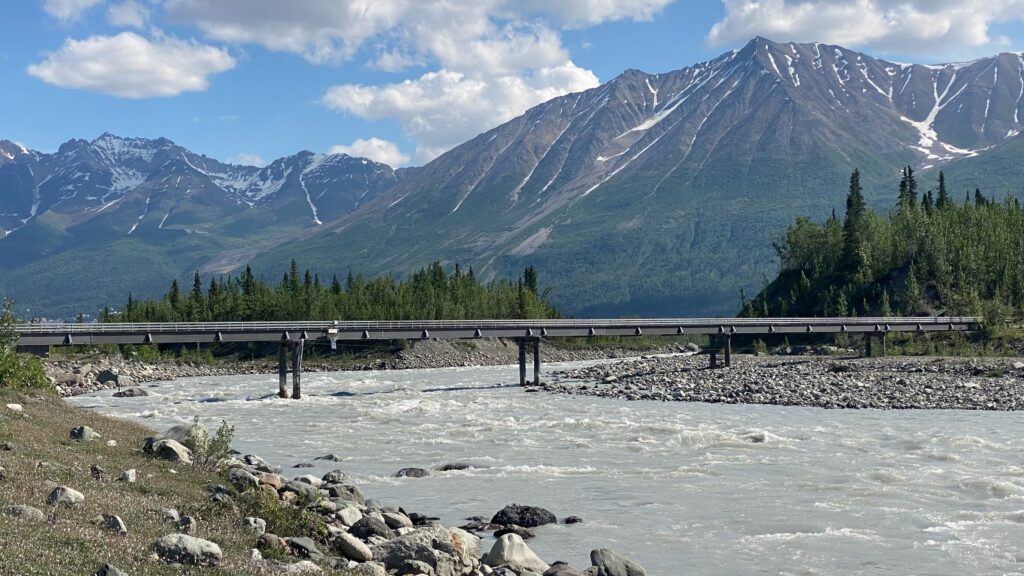
Take the Mill Tour in Kennecott and Then Walk Around Town for More Information
The 2-hour guided walking tour will provide a lot of information about the discovery of copper, the building of the town, including power plant, railroad and mill to support the mining. Plus, you’ll don a hard hat to walk through the copper milling process in the 104-year-old mill.
All of the tours in the area, other than flight tours, are offered by one guide group, the St. Elias Alpine Guides (link here).



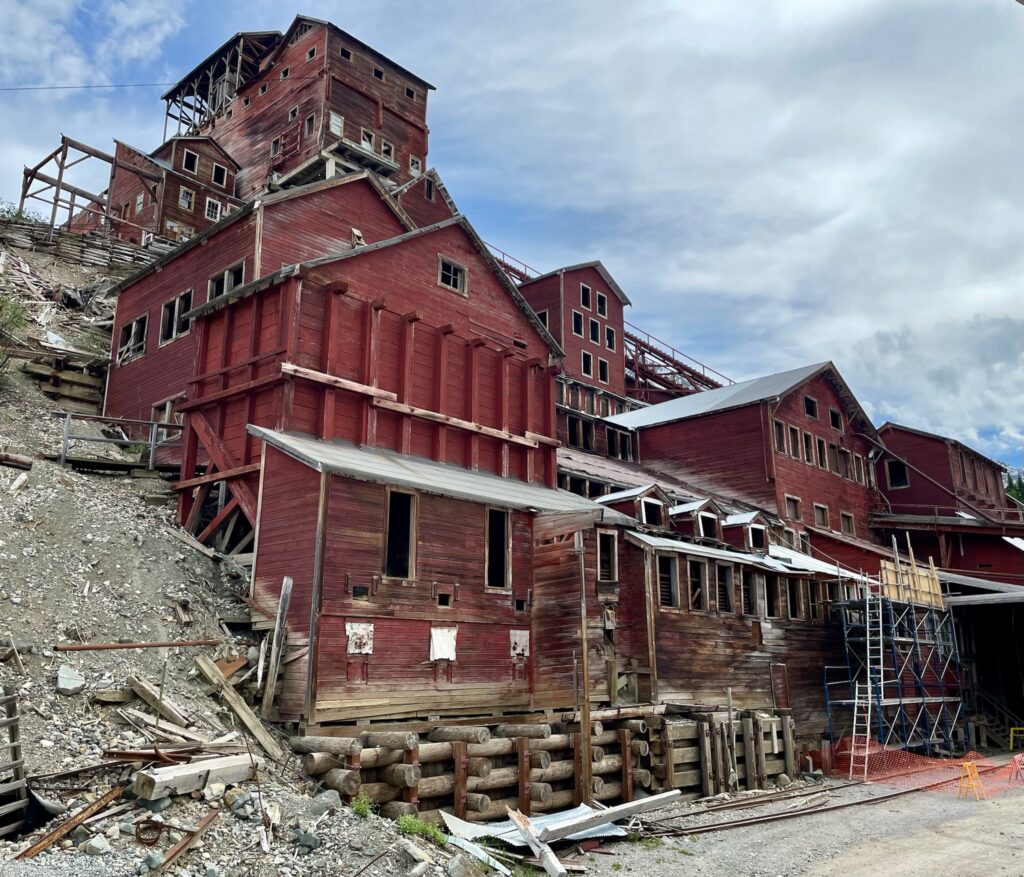
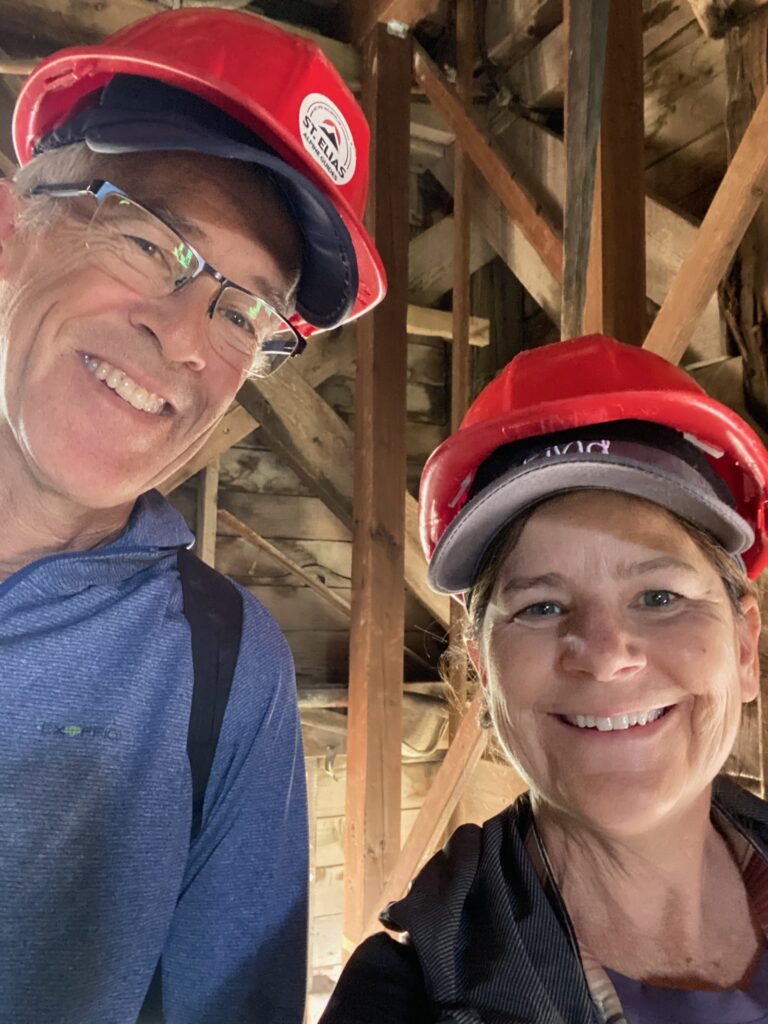
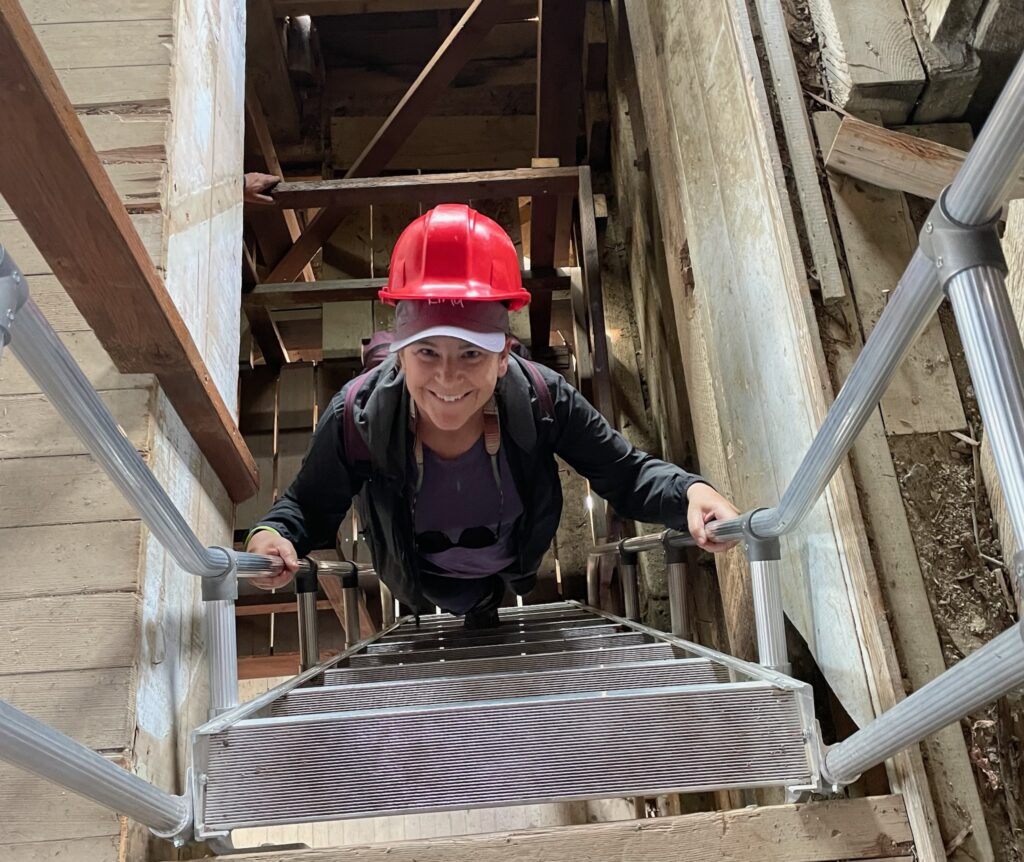
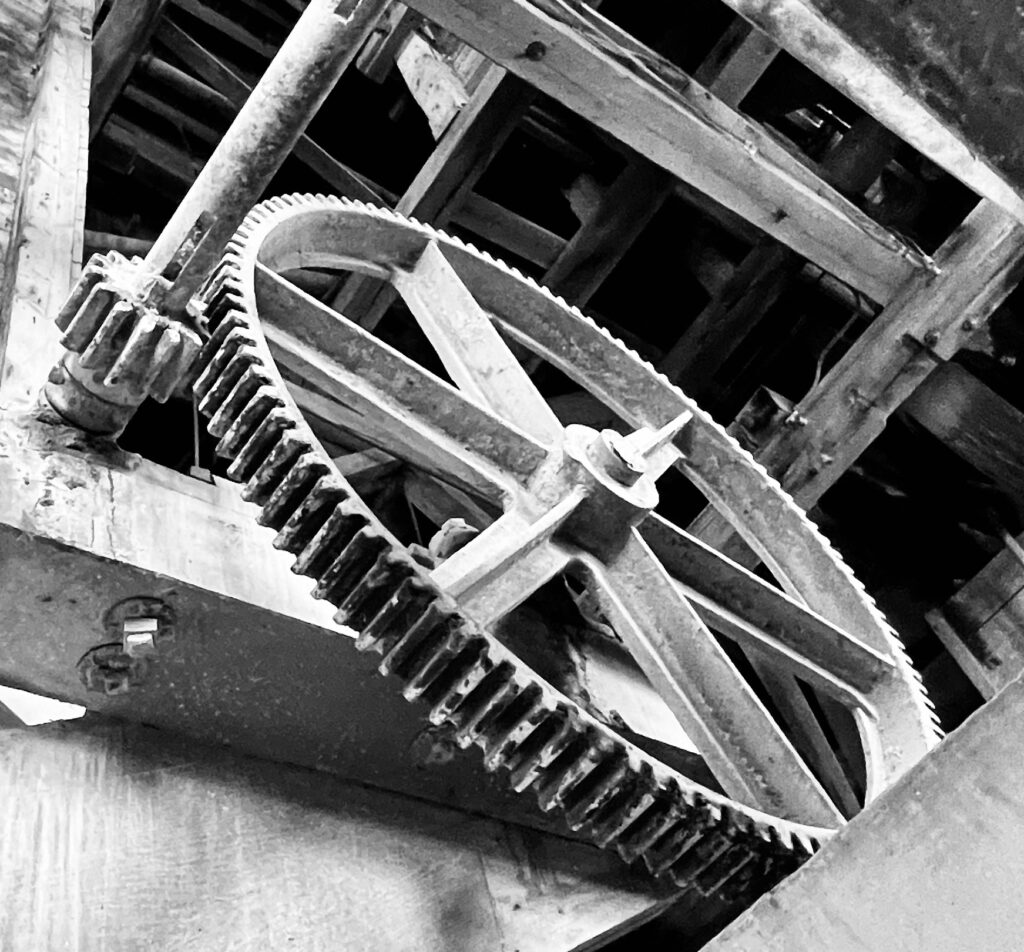
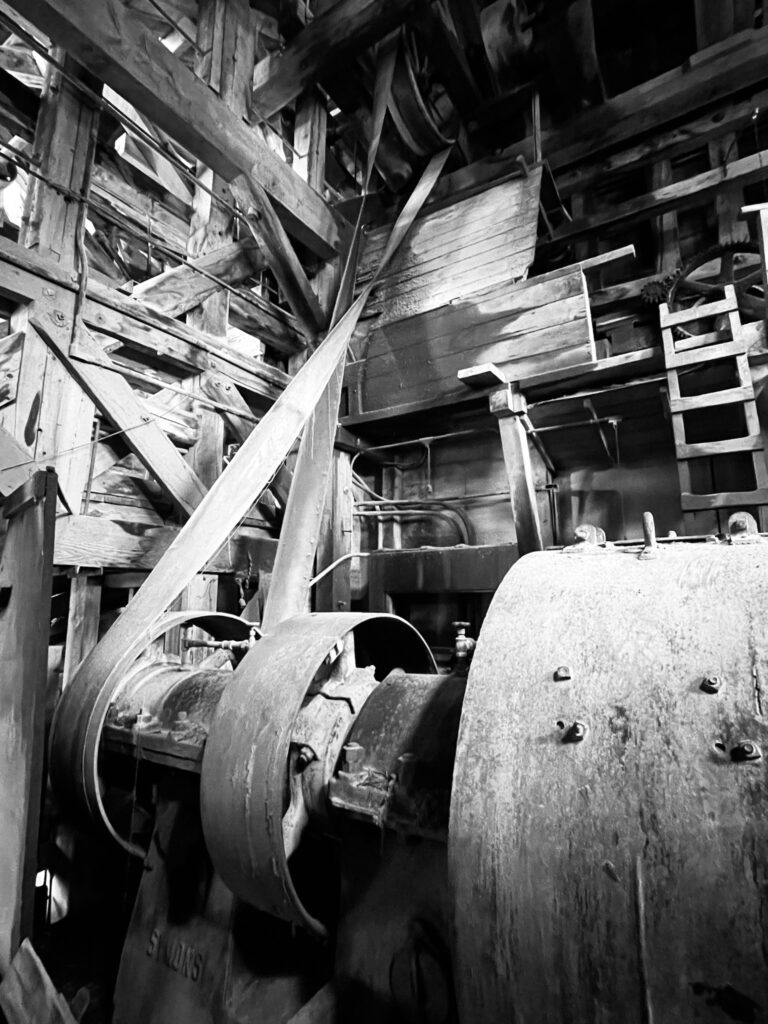
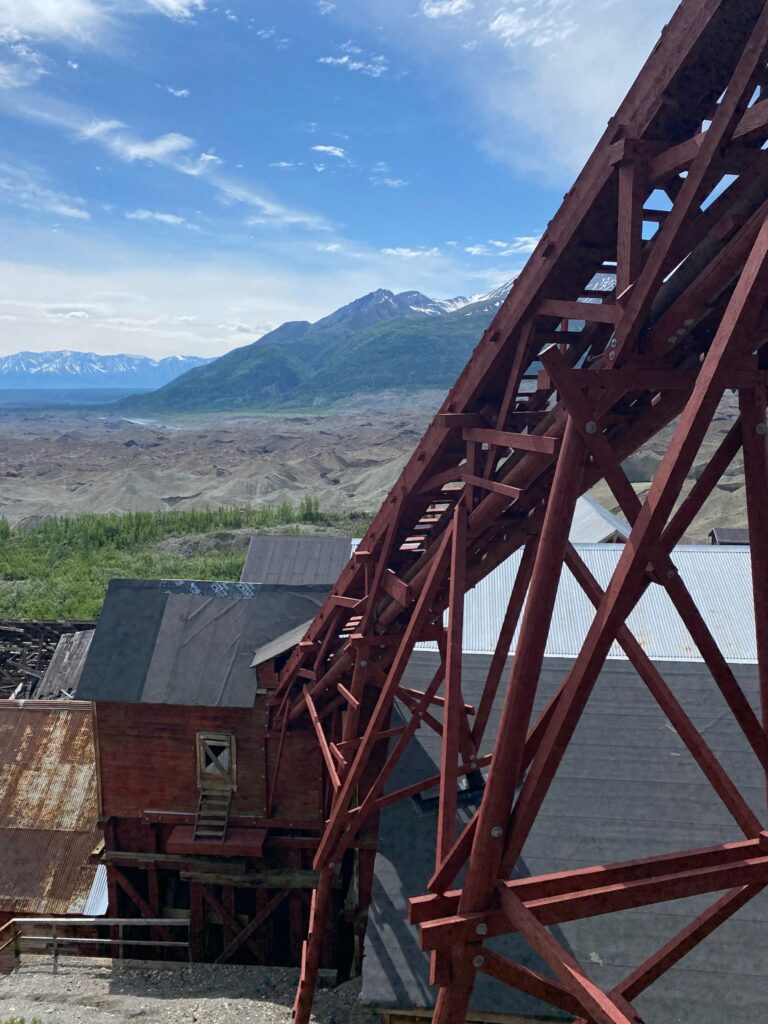
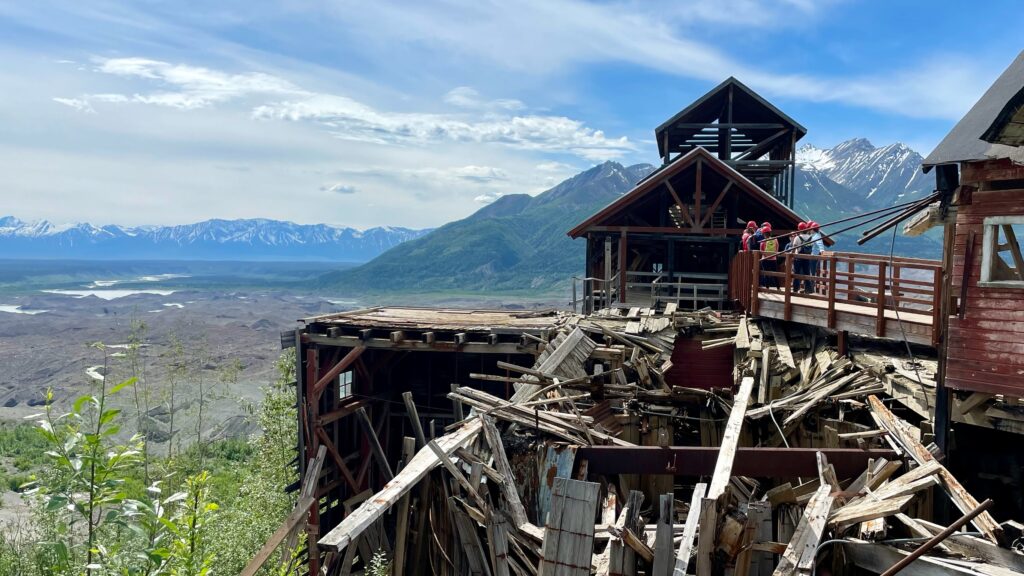
Hike On A Glacier
Just past the town of Kennecott, on the outskirts there’s a 2.5-mile trail to the Kennicott Glacier. If you’ve got some crampons, get out on the ice and hike around!
If you need gear, go with one of the guides from St. Elias Alpine Guides.
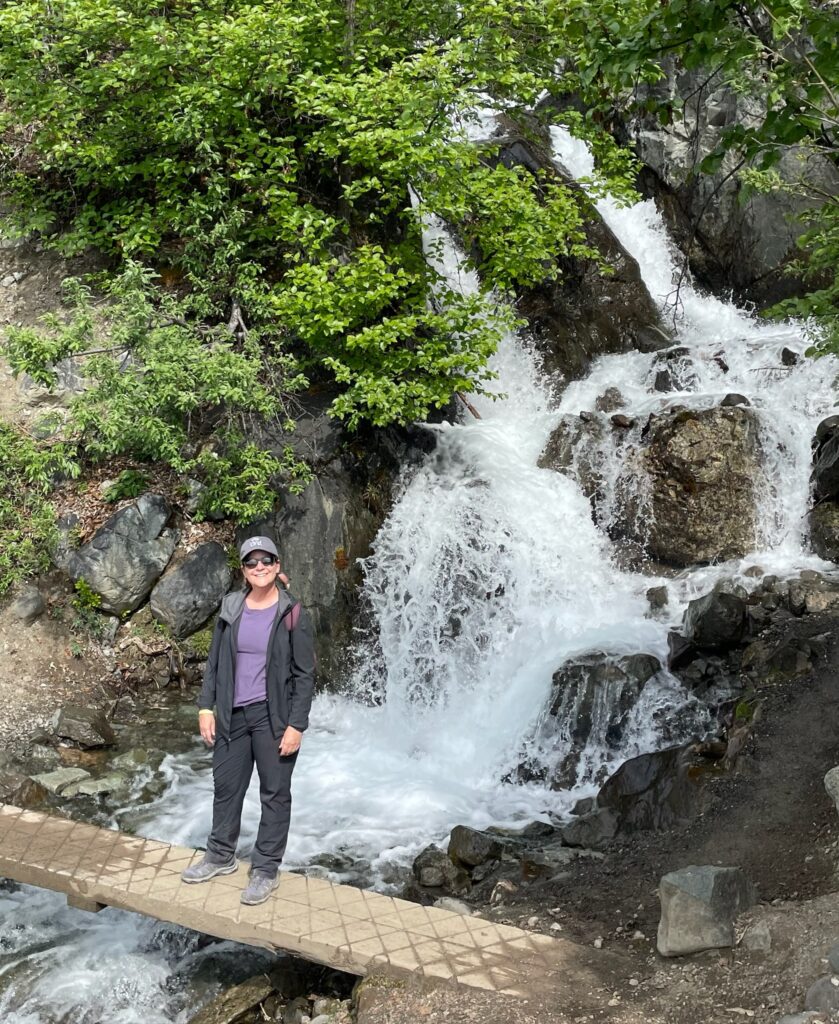
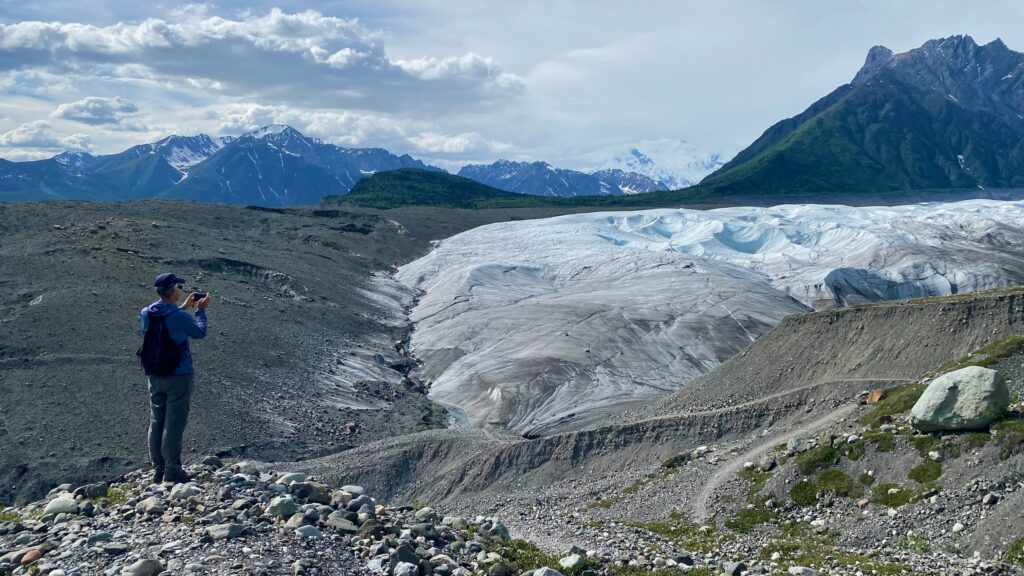
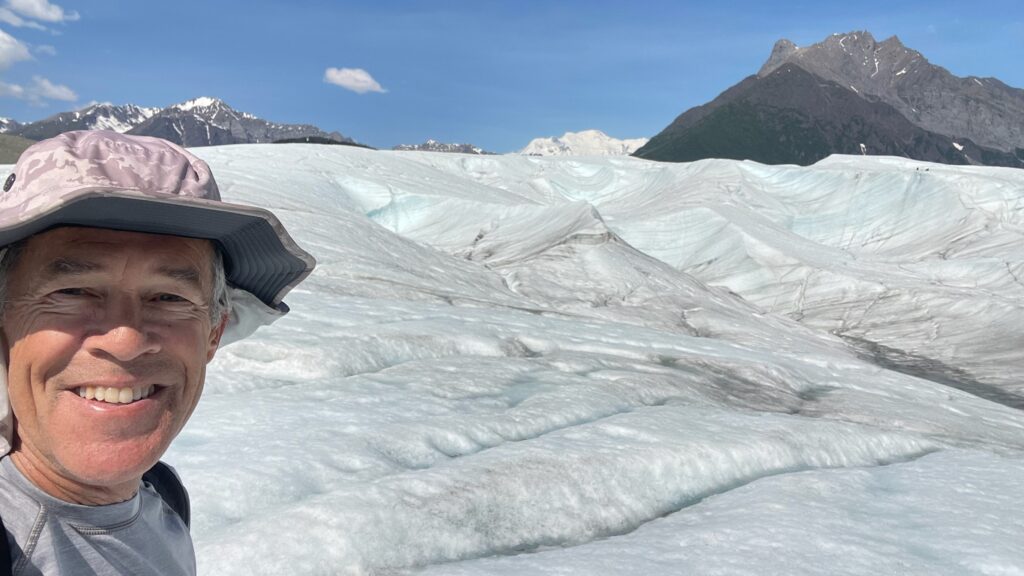
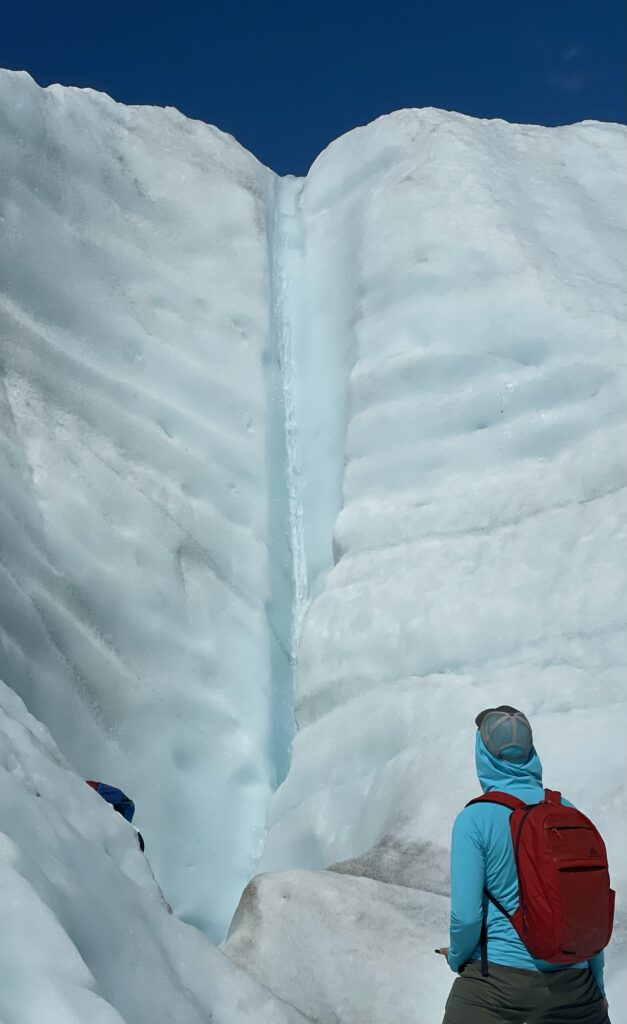
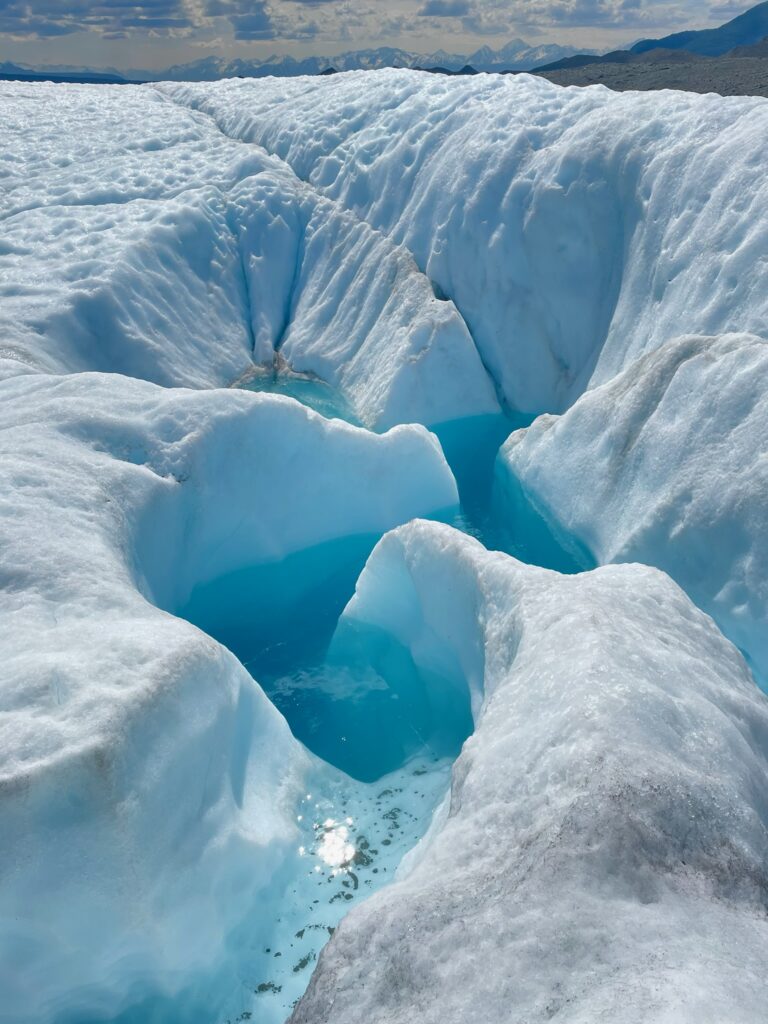
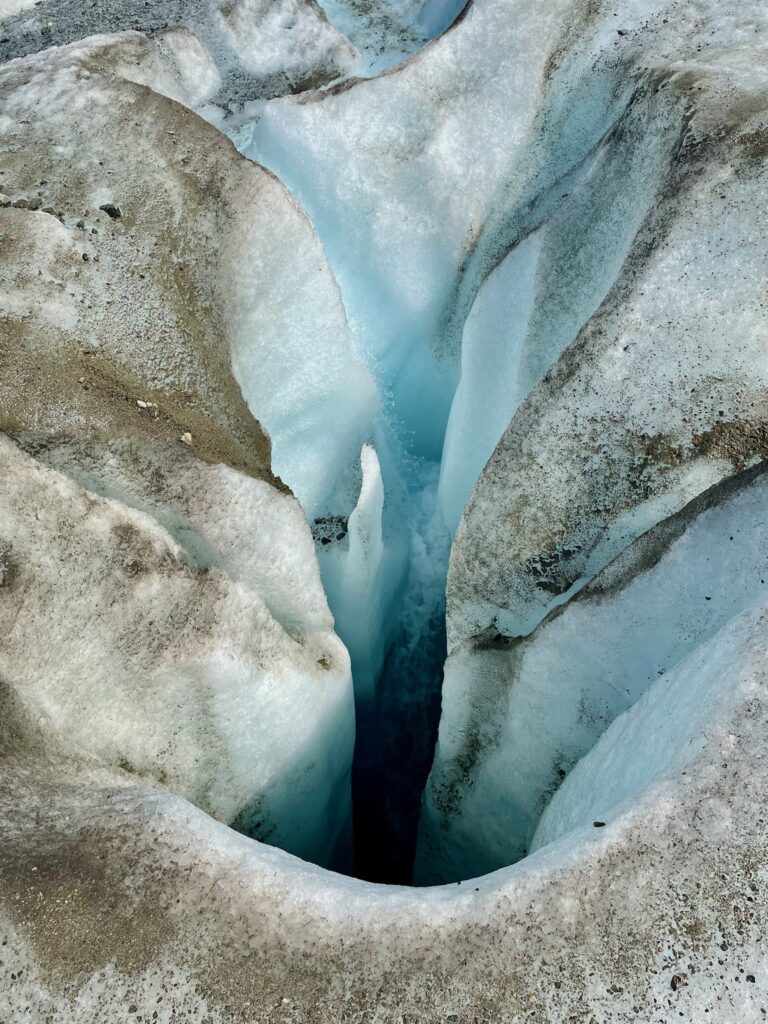
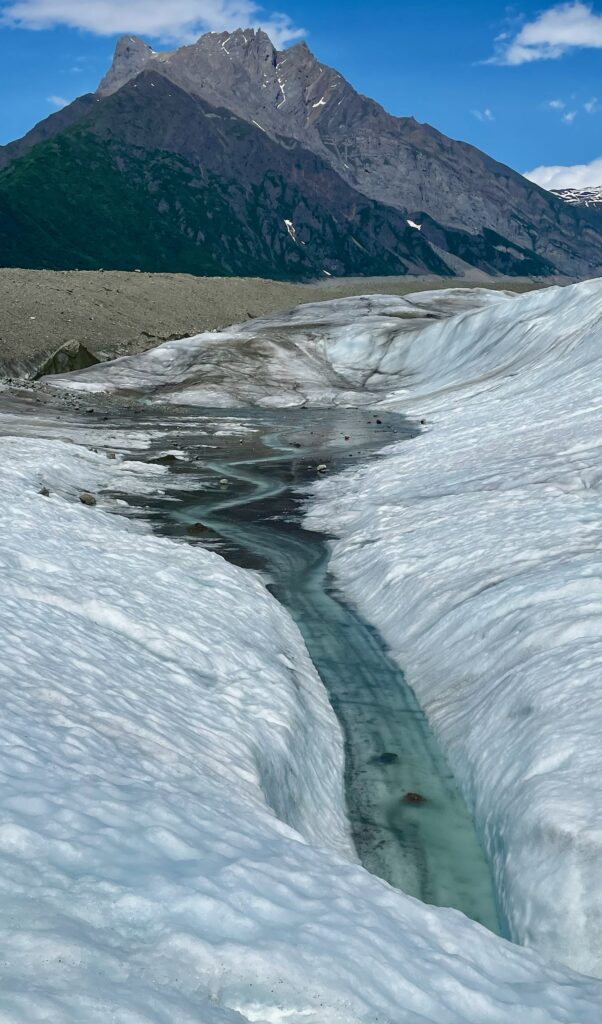
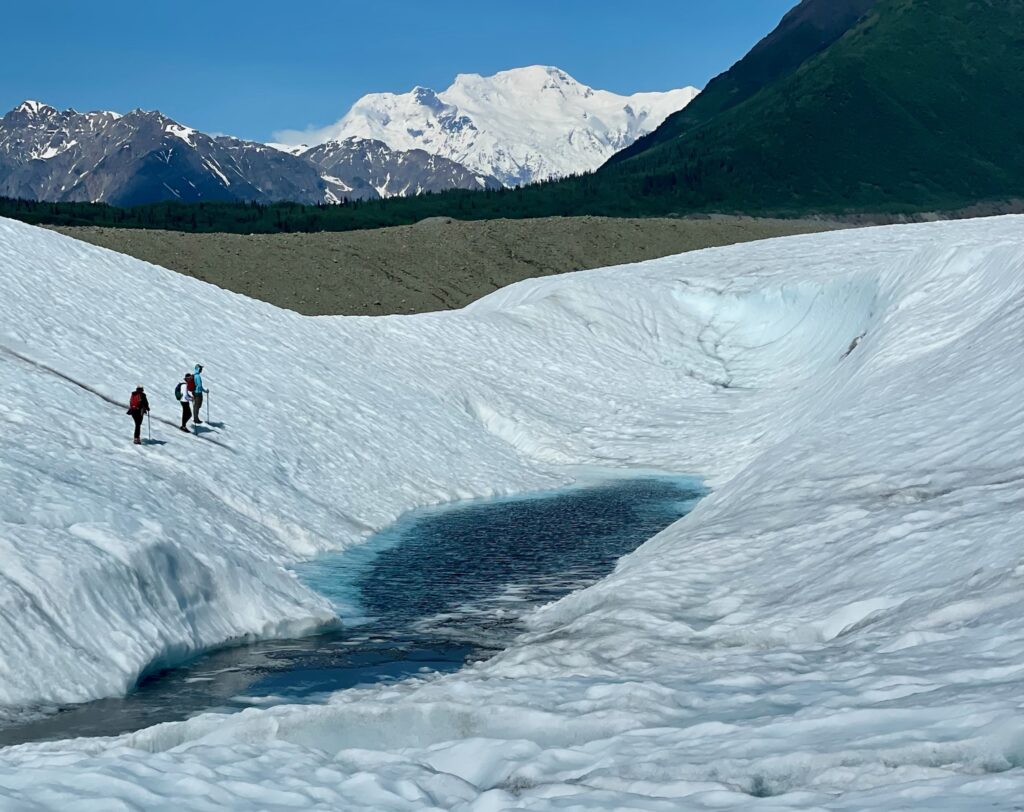
Visit McCarthy’s Free Museum And Eat At The Potato Restaurant
The free museum is housed in the former Copper River & Northwest Railroad depot and a train car. Donations are accepted.
The Potato is a restaurant that has a made-from-scratch menu and every item we tried was delicious. They also serve wine and beer and one of the locals said that in McCarthy they don’t publish their closing time. They’re open until people leave. (Their second location in Valdez keeps standard hours.)
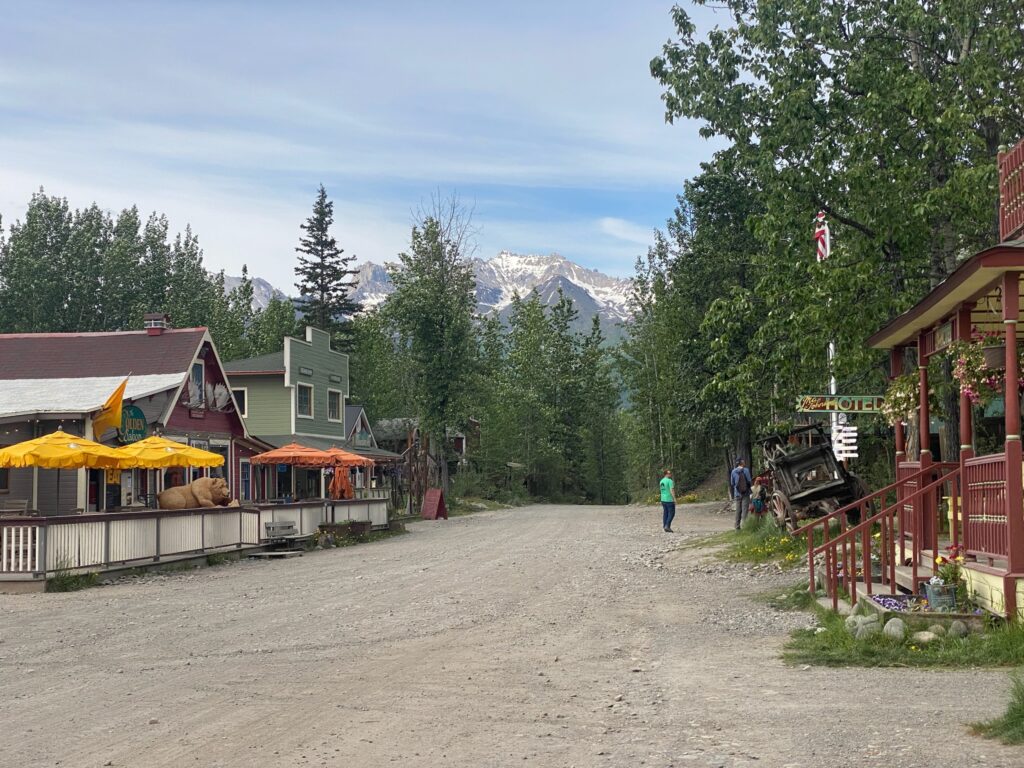
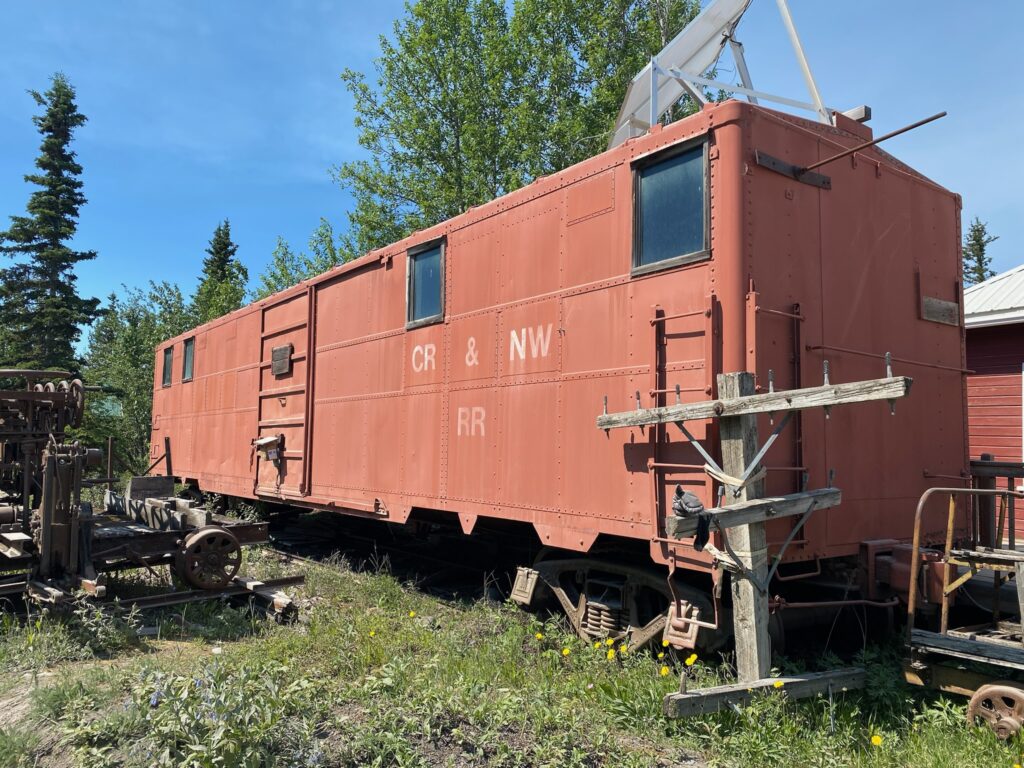
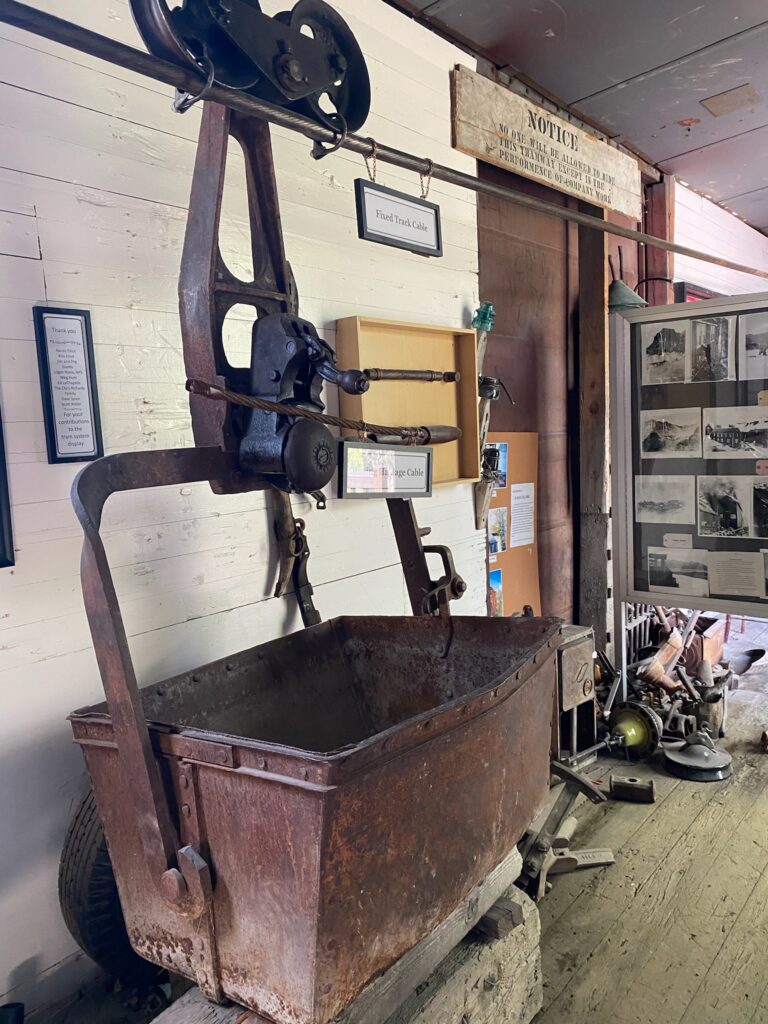
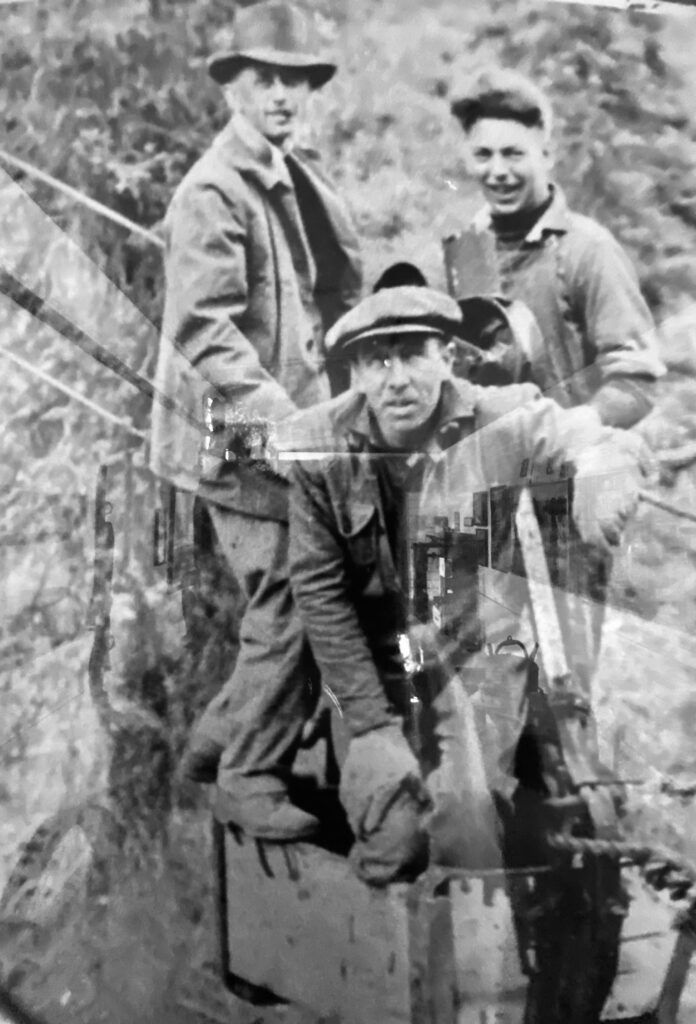
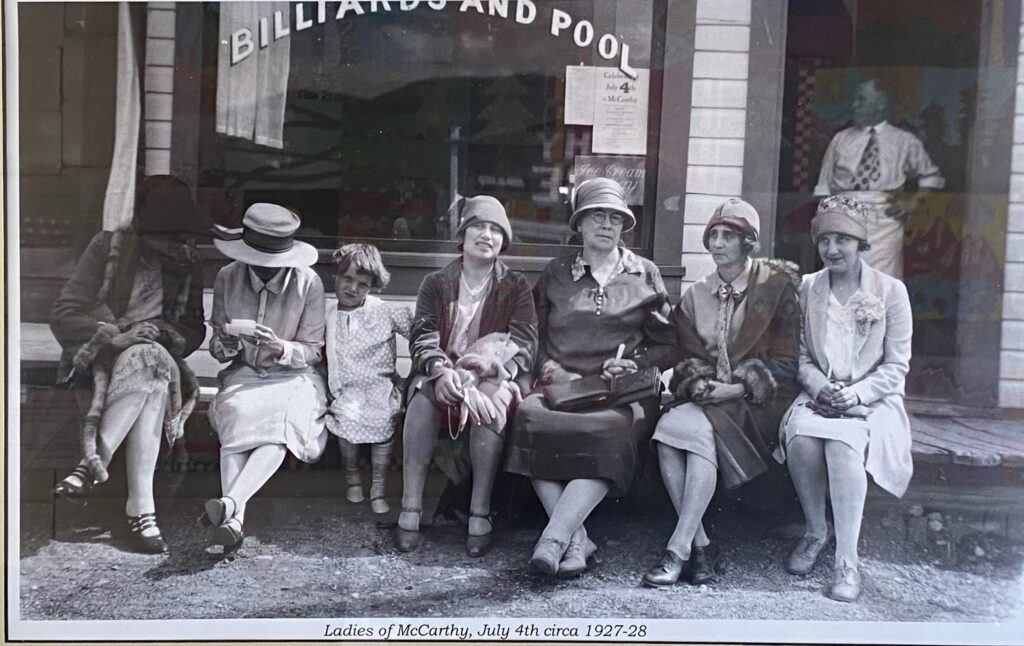
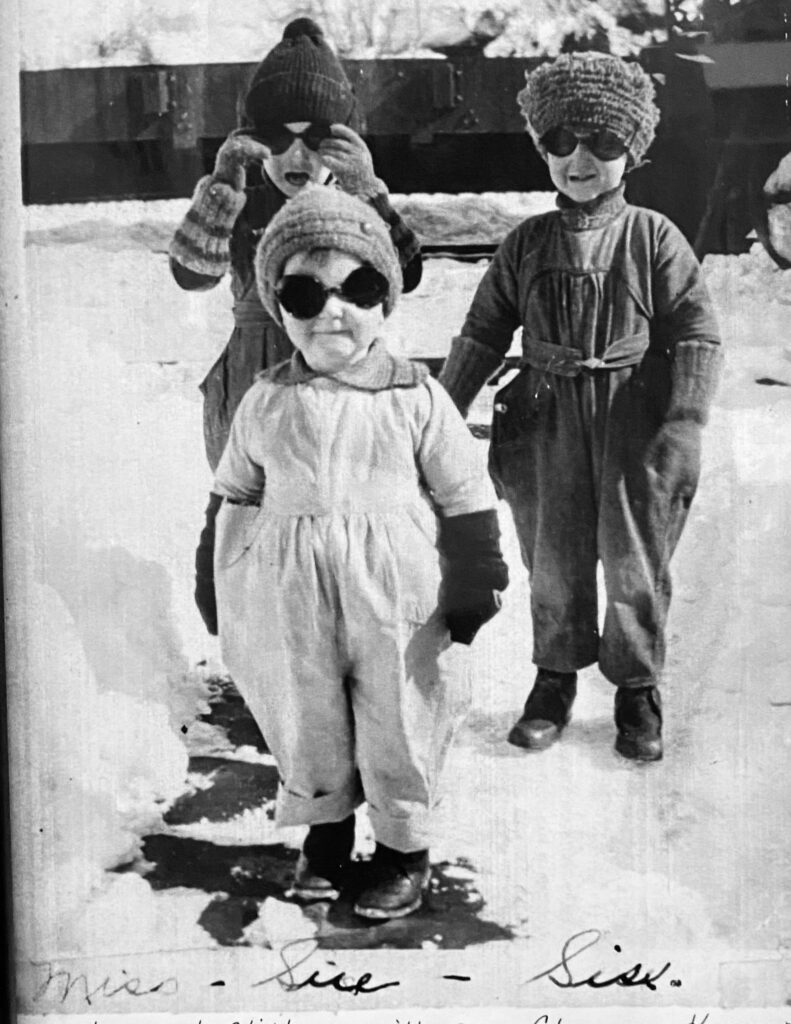
Take A Flight Seeing Tour With Wrangell Mountain Air
This is a vacation splurge! Flights start at about $350/person, but for 70 minutes we were simply in awe of the area and it’s the only way (other than my stats above) to get a real sense for this incredibly wild park. It was the highlight of our trip here and I’d say one of the best things we’ve done in Alaska to date! Loved the variety of landscapes we saw (some pictures below but there were so many photos that the YouTube video is a much better representation of what we saw – 70 minute flight tour compressed into a bit over 2 minutes).
Wrangell Mountain Air website linked here.
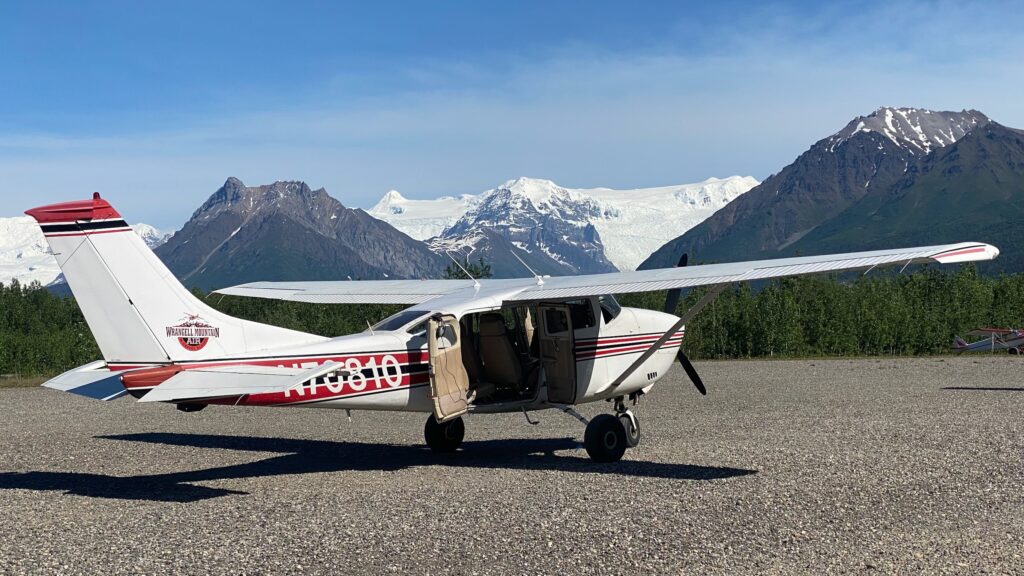
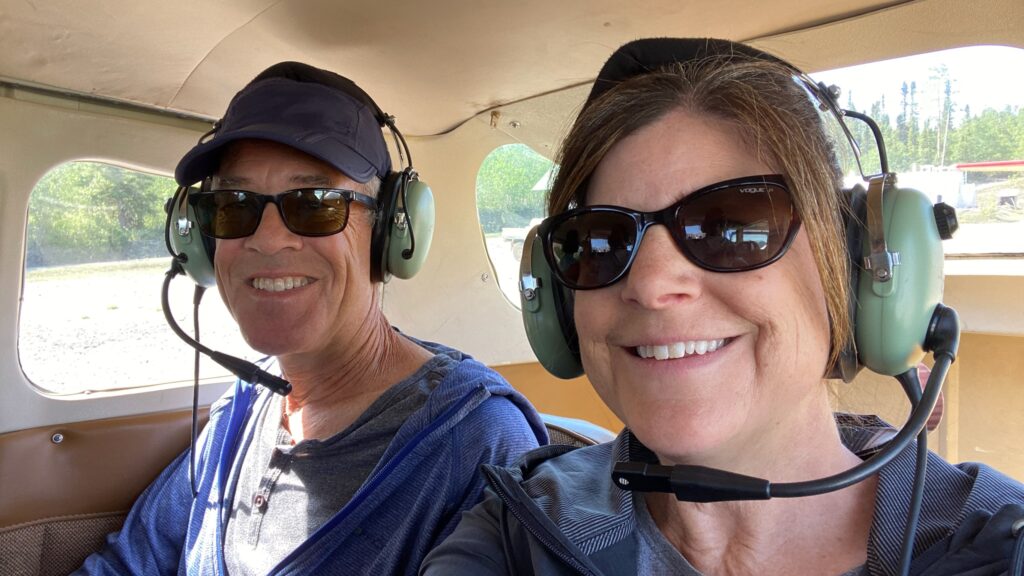
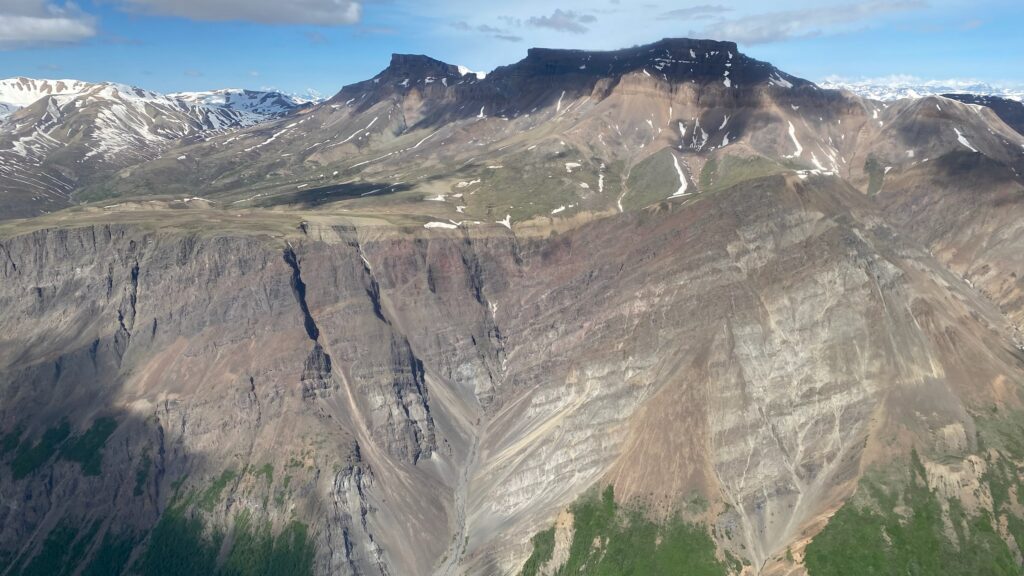
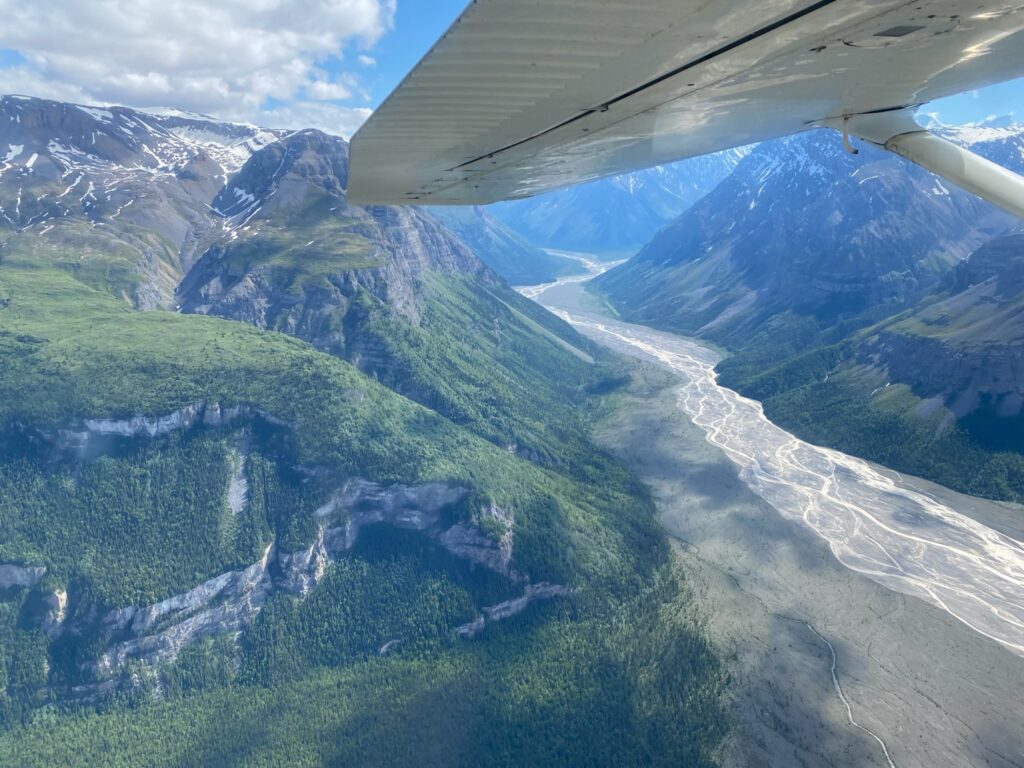
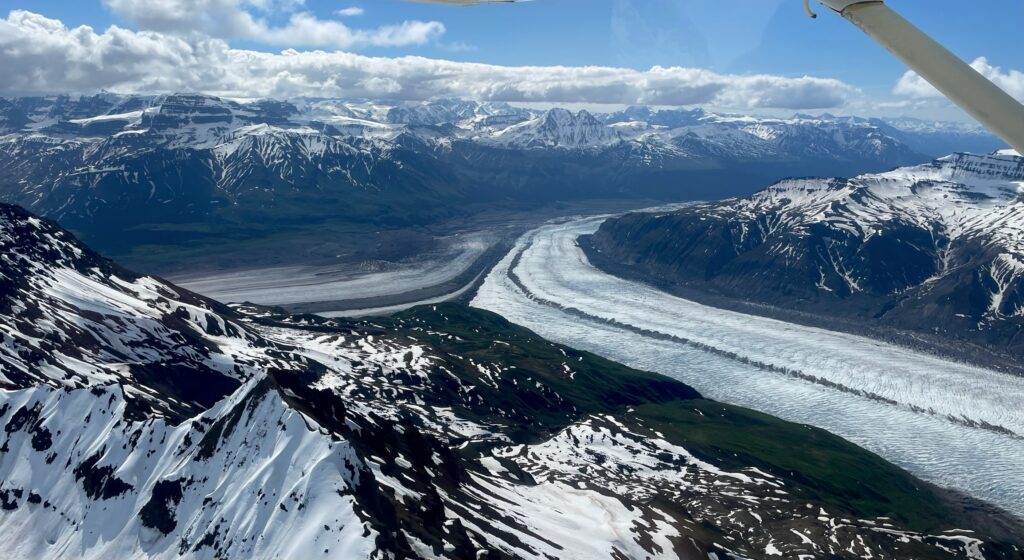
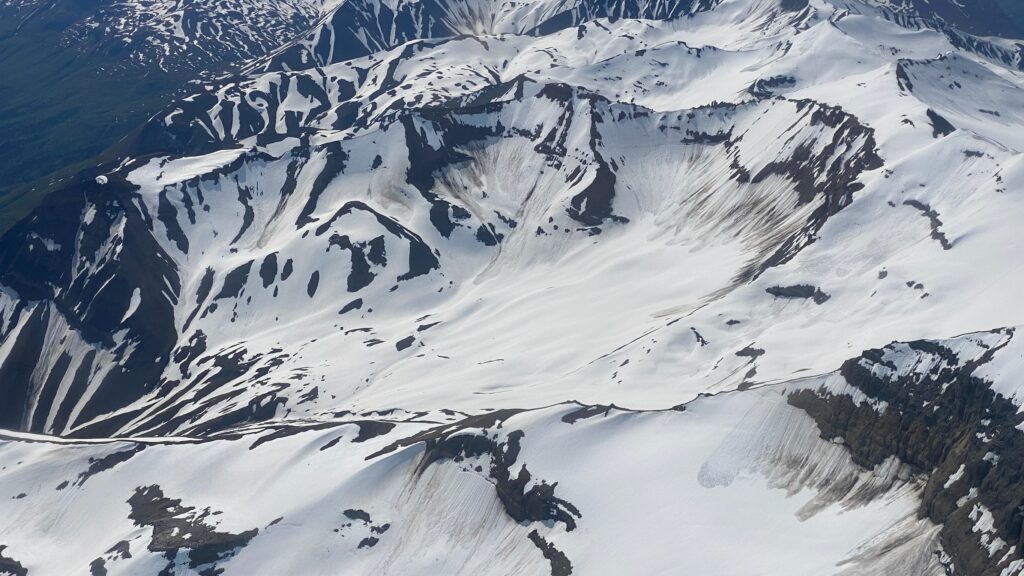
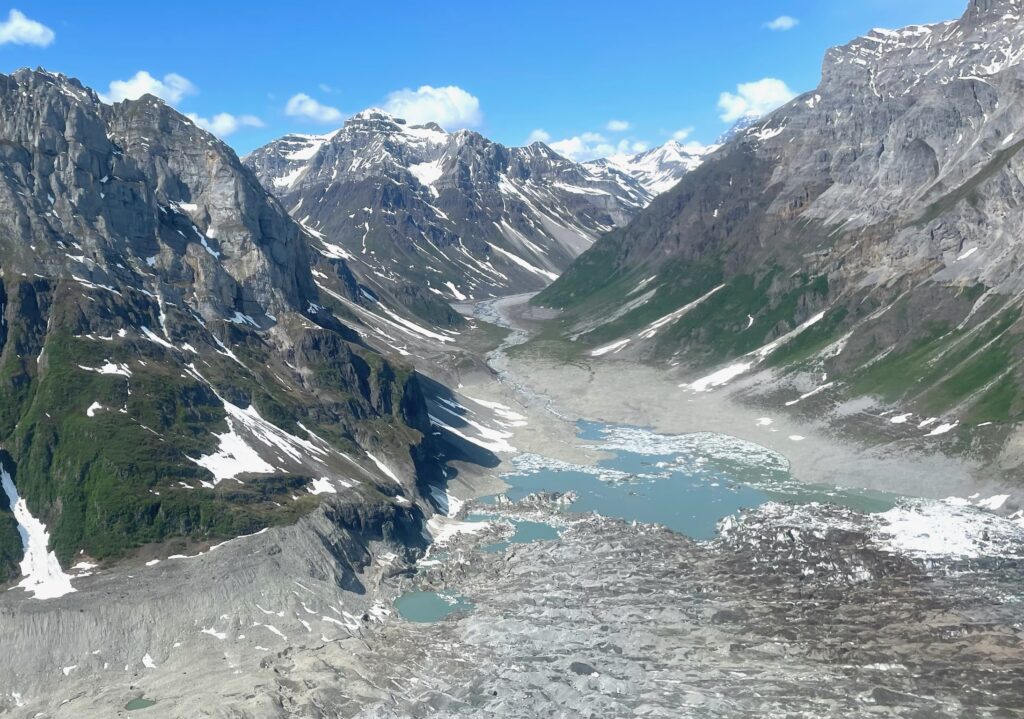
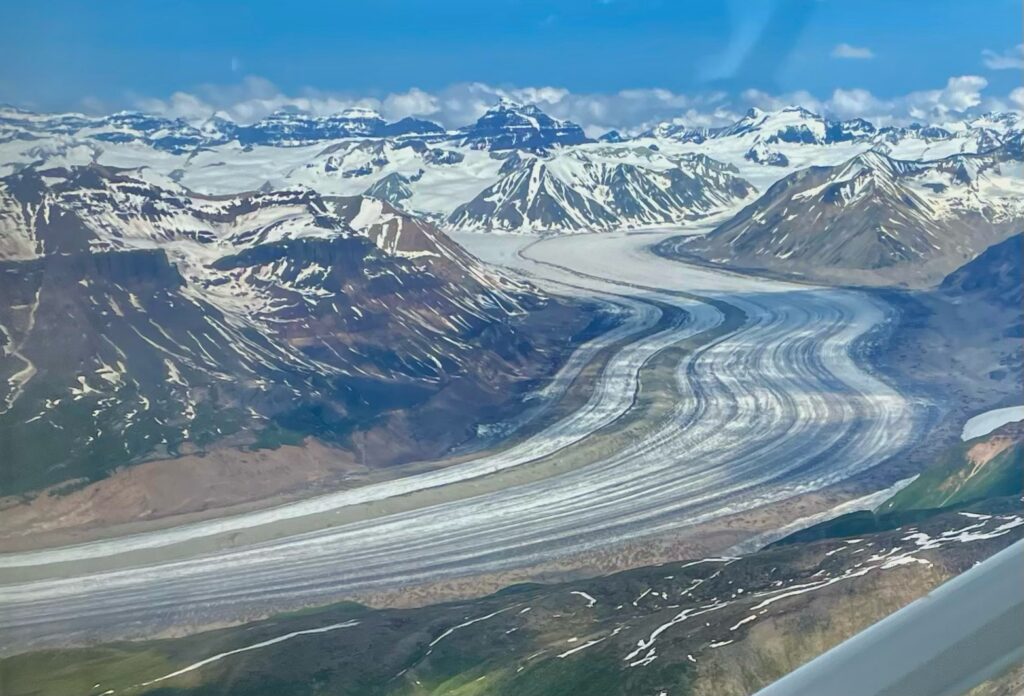
Get Out And Paddle
From the campground, Doug dropped the pack-raft into the glacial fed lake and really enjoyed himself.
If you don’t carry any kind of raft or kayak with you, again St. Elias Alpine Guides can rent you gear. Their website is linked above.
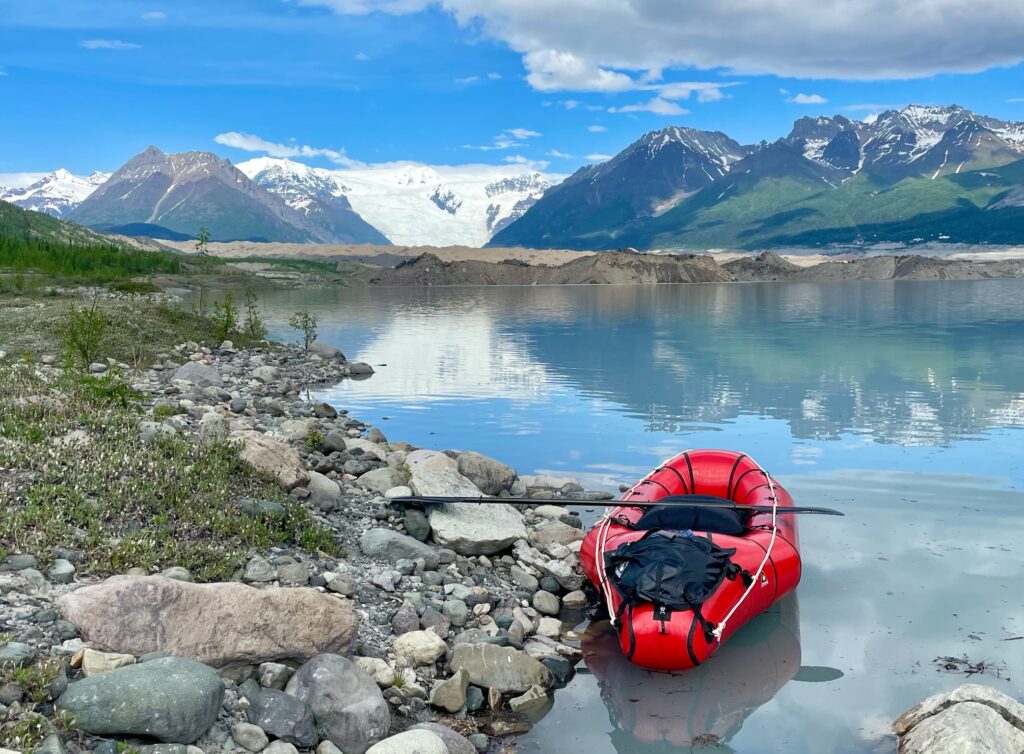
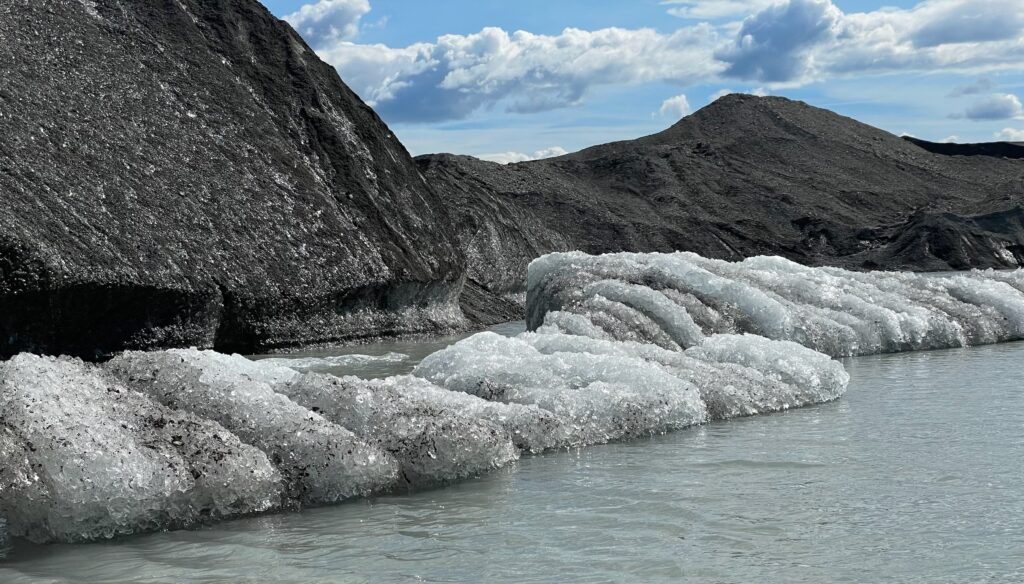
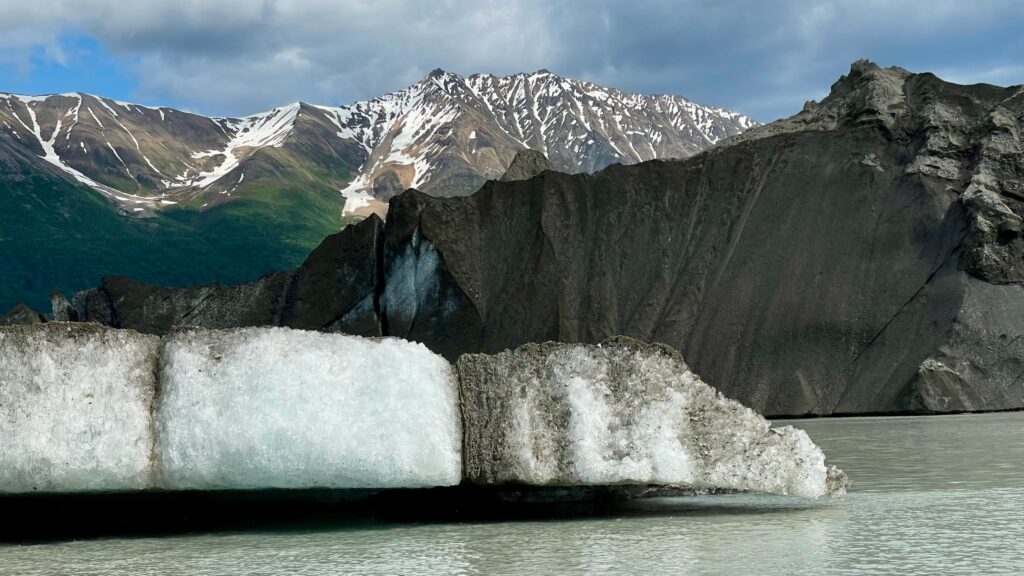
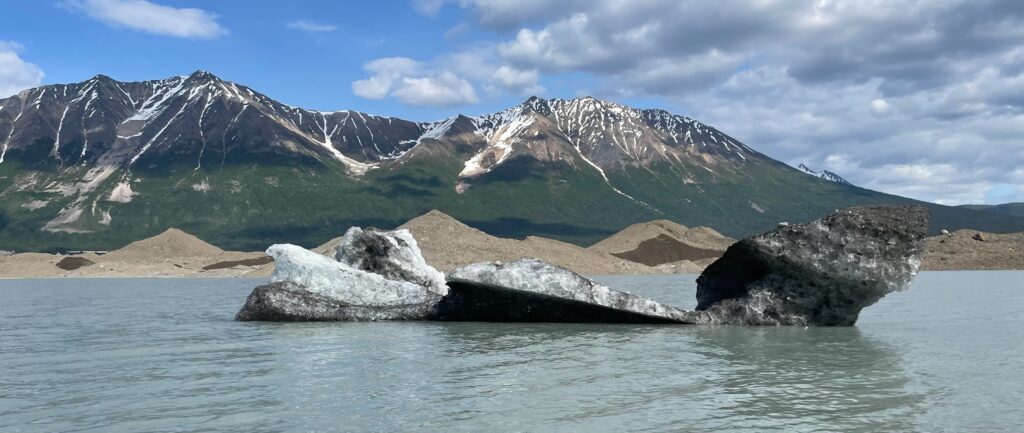
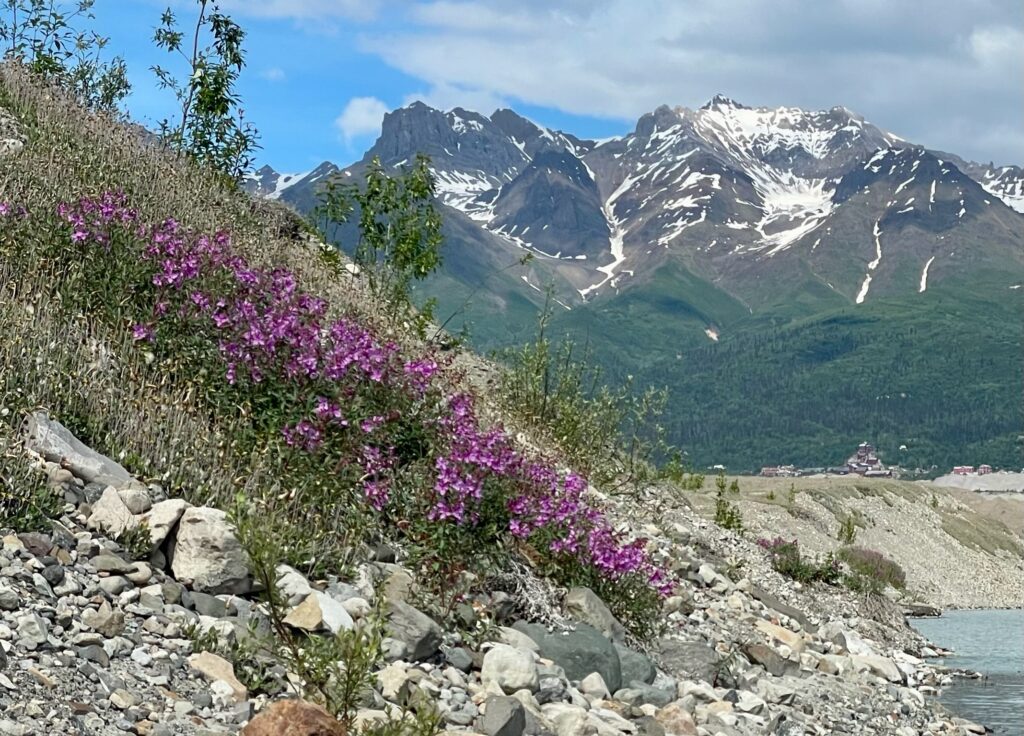
Other Things We Heard About In The Area
- Back country camping, hiking, and fishing are available. There are even places that small planes will drop visitors off to camp and hike.
- Ice Climbing . On a guided tour, you can get out with rented crampons, helmets, ropes, etc and climb.
- Hike to other copper mining bunkhouse sites. Weather / trail permitting there are other hikes in the area. Doug attempted an 8-mile round trip to another bunkhouse location, but was stopped by steep snowbanks in mid June!
- We heard there’s a great family style dinner at the Kennicott Glacier Lodge.
After every national park we visit, Doug has a habit of saying something like, “That was so fantastic! I’d put it in the top 3!” I tease him mercilessly about this because obviously all of them can’t be in the top 3, but what is true about each and every one is that they’re all unique and their national parks for a reason – they’re spectacular and this one is no less so than any of the rest, despite being rarely visited.
Visiting the Wrangell-St. Elias National Park is more than just a visit to a national park; it’s a step into a different era and a closer connection to the wild, unspoiled beauty that defines Alaska. This destination captures the essence of Alaska’s rugged spirit and the enduring allure of its untamed landscapers. Maybe it will remain in our Alaska top 3 after all.

